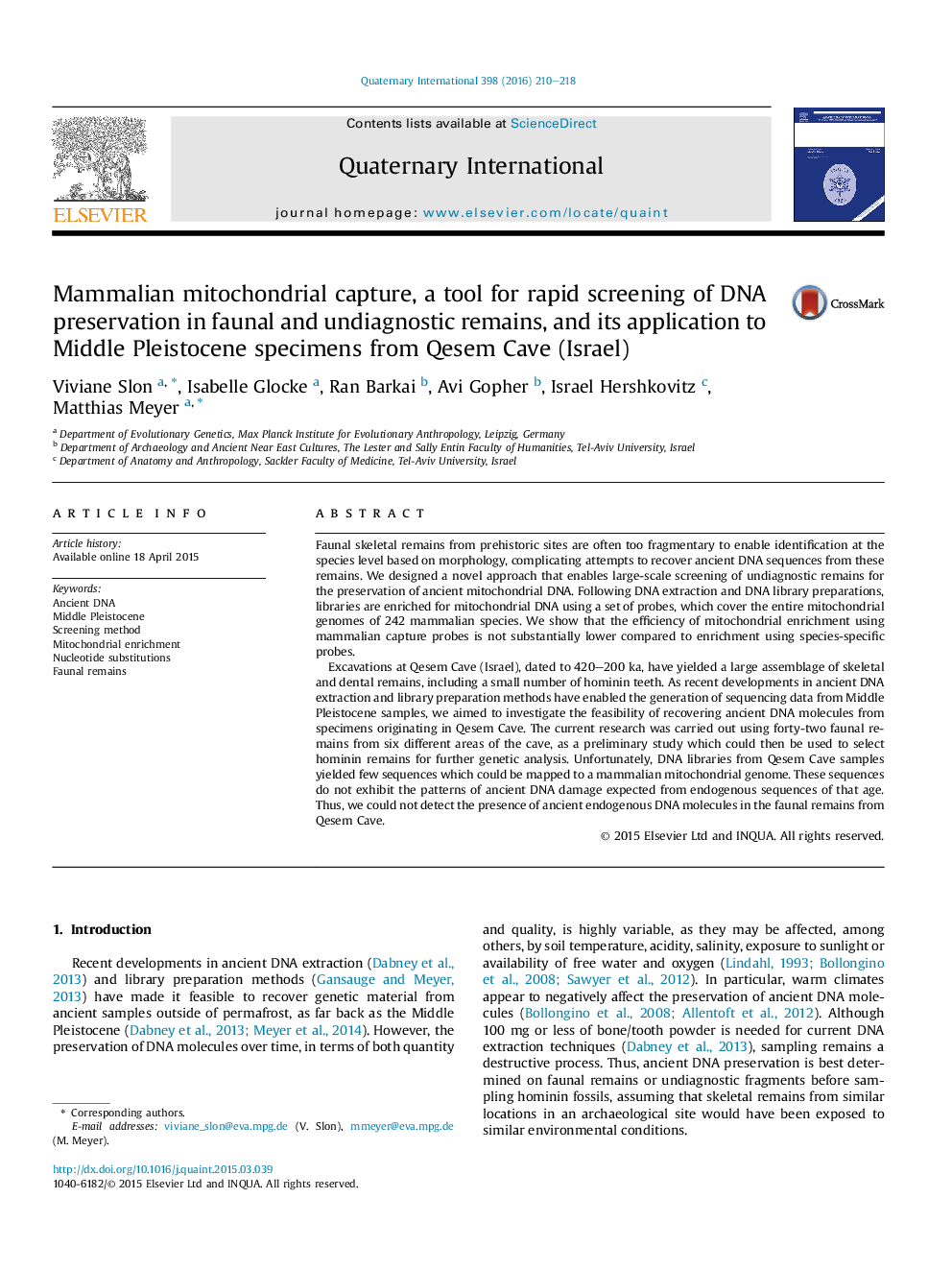| Article ID | Journal | Published Year | Pages | File Type |
|---|---|---|---|---|
| 1040295 | Quaternary International | 2016 | 9 Pages |
Faunal skeletal remains from prehistoric sites are often too fragmentary to enable identification at the species level based on morphology, complicating attempts to recover ancient DNA sequences from these remains. We designed a novel approach that enables large-scale screening of undiagnostic remains for the preservation of ancient mitochondrial DNA. Following DNA extraction and DNA library preparations, libraries are enriched for mitochondrial DNA using a set of probes, which cover the entire mitochondrial genomes of 242 mammalian species. We show that the efficiency of mitochondrial enrichment using mammalian capture probes is not substantially lower compared to enrichment using species-specific probes.Excavations at Qesem Cave (Israel), dated to 420–200 ka, have yielded a large assemblage of skeletal and dental remains, including a small number of hominin teeth. As recent developments in ancient DNA extraction and library preparation methods have enabled the generation of sequencing data from Middle Pleistocene samples, we aimed to investigate the feasibility of recovering ancient DNA molecules from specimens originating in Qesem Cave. The current research was carried out using forty-two faunal remains from six different areas of the cave, as a preliminary study which could then be used to select hominin remains for further genetic analysis. Unfortunately, DNA libraries from Qesem Cave samples yielded few sequences which could be mapped to a mammalian mitochondrial genome. These sequences do not exhibit the patterns of ancient DNA damage expected from endogenous sequences of that age. Thus, we could not detect the presence of ancient endogenous DNA molecules in the faunal remains from Qesem Cave.
